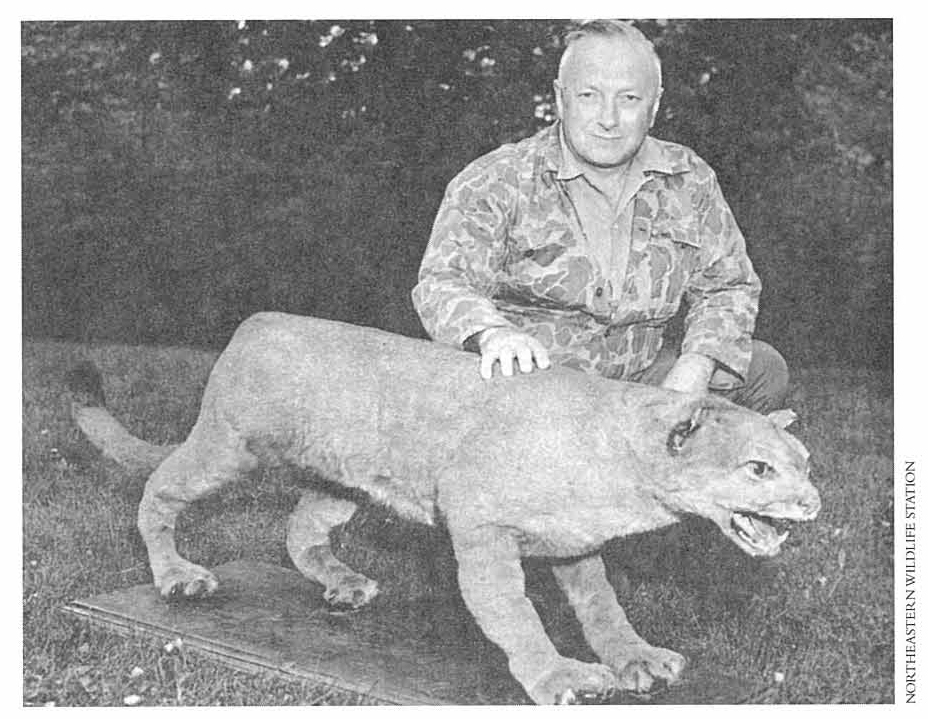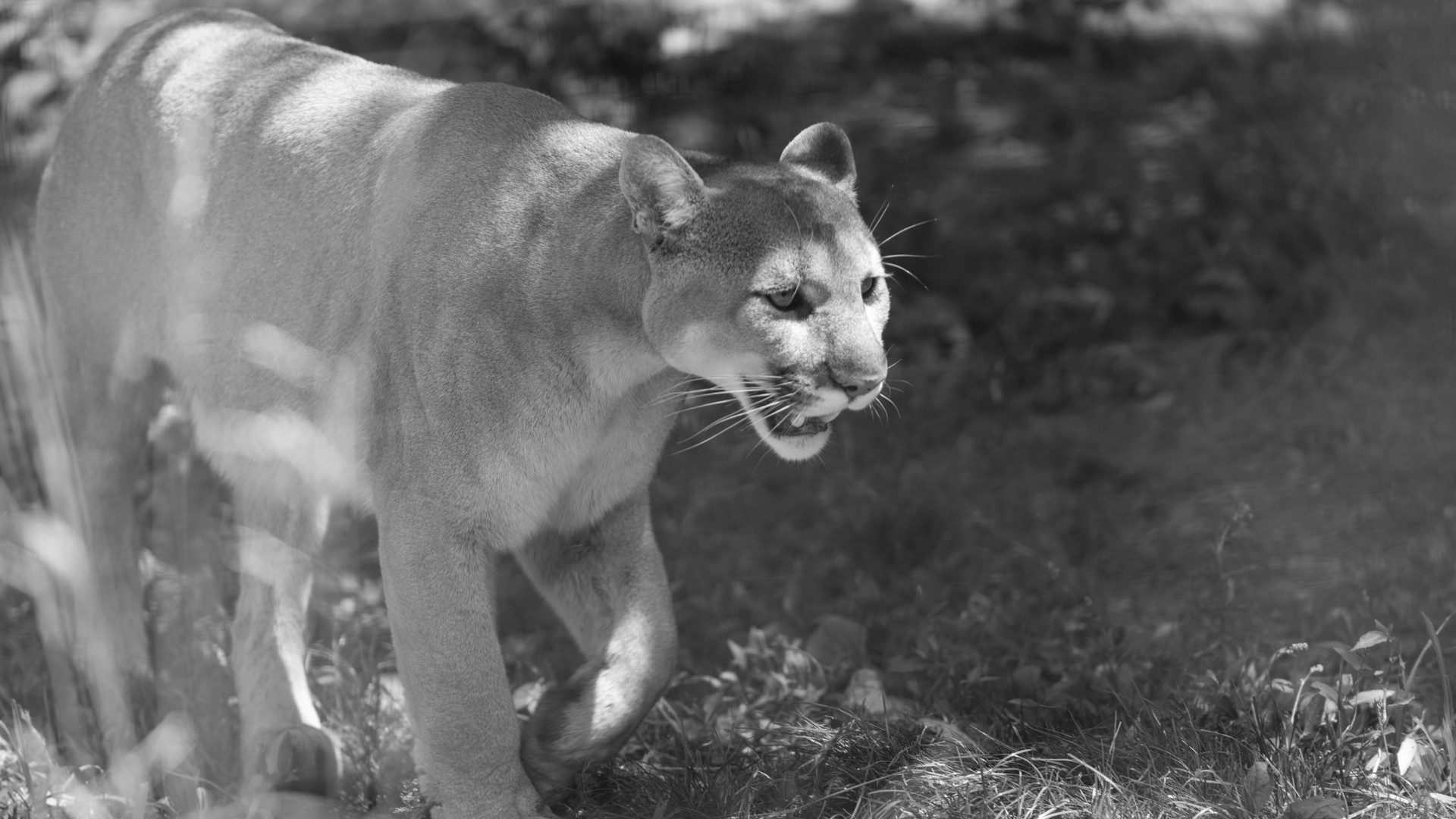Say good-bye to the “ghost cat.” This week the U.S. Fish and Wildlife Service officially declared the eastern cougar (Puma concolor couguar) to be extinct and removed it from the endangered species list.
This news, sad though it is, has been a long time coming. The big cats, once native to New England, were last verifiably observed back in 1938. The Service first concluded that the species was extinct back in 2011, and then proposed removing its protected status in 2015. This latest step, taken after extensive scientific review and public comment, completes the eastern cougar’s long journey into the night.
Eastern cougars — also known as “ghost cats,” catamounts, panthers and, of course, mountain lions — disappeared after decades of overhunting on multiple fronts. The large predators were seen as threats to livestock, which resulted in the cats being actively hunted and bounties placed on their heads.
On top of that, the cats also ran out of their primary prey, deer, which were themselves hunted into near-extinction. “White-tailed deer were nearly eradicated from the eastern U.S. in the late 1800s,” Service biologist Mark McCollough told me in 2011. “The few cougars that survived [after that] would have had very little food to support them.”

Extinct or not, the eastern cougar remains a vital part of New England culture and mythology. Several boys’ and girls’ sports teams in the region are still called the Cougars or Catamounts, and people still think they see the animals quite frequently, although these sightings are usually later proven to be bobcats, lynx or other animals. A few New England sightings, however, have been confirmed to be escaped captive cougars of other subspecies. One of the most credible reports took place just a couple of miles from where I used to live in Wiscasset, Maine.
Meanwhile cougars from the West are actually expanding their range and repopulating areas where they had once been exterminated. Most of those settle in the Midwest, but one famous mountain lion trekked all the way from the Black Hills of South Dakota to Connecticut a few years ago — a journey of about 2,000 miles.
That particular cat died after being struck by an SUV — like so many of its Florida panther cousins — but it may not be the last western panther to make New England its home, even temporarily. Many experts feel the Maine woods and other New England locations hold a lot of potential as a possible sites for cougar rewilding as the species continues its eastward expansion. “Biologically, it wouldn’t be hard to resettle them,” McCollough said at a meeting in Damariscotta, Maine, last year. “They could adapt to the East.”
That would be too little, too late to make up for the extinction of the eastern cougar, but who knows, maybe one day soon the forests of New England will once again have their own populations of breeding big cats, not just the ghosts that used to live there.
Previously in Extinction Countdown:
Christmas Island Bat, Last Seen in 2009, Confirmed Extinct



Trump Jr. would sure love to kill the last one…. if it existed.
Current research and investigation suggest that the entire North American cougar population is but one subspecies. Therefore, the “Eastern Cougar” were just North American Cougars living along the East coast.
This isn’t 100% settled — the debate existed long before the original 2011 article mentioned above and continues to this day — which is why we opted not to go into it again at this time. But it will be interesting to see how the science pans out over the next few years.
Penn State puma genome study confirms Culver:
https://www.biorxiv.org/content/early/2017/11/10/214510
Recolonization? Problem is, the closest breeding females are in central Nebraska. It took 25 years of dispersal from the Black Hills to recover 150 miles to central Nebraska, across some of the most unpeopled landscapes in the Lower 48. 150 miles in 25 years. Under good conditions, puma recovery is a couple centuries to Maine.
It could be done by any healthy animal l in a single season, easy.
Yes, one could, but the Midwest is a cougar graveyard. No cat that that has been killed or captured in the Midwest in 25 years has been over the age of three. They all die or disappear. And unachievable hunting quotes in the Badlands and Black Hills have been reducing the number of eastward dispersers every year since 2011. Fewer dispersers, a killing gauntlet, females back in Nebraska, and unenforced protections all make recolonization highly unlikely.
sad but true… males can get through once in a while – but females are a different story
I’m from Pennsylvania. Just a couple of years ago, my son in law and myself, saw a group of three, yes three partially grown cubs, just north of Harrisburg. Almost had a physical confrontation with my dog. My dog charged, but stopped when one of the group of cats advanced toward him in response. After a few very long seconds of shouting, the cats jumped off the trail and disappeared. But, I wouldn’t expect the Game Commission to accept a sighting as genuine, until one finally bites ’em in the a**. Plenty of food and space for them, it’s just a matter of time.
Wherever white people go, they will create extinction of animals, birds, people, cultures, religions. They do it today too. A decade back, a white man tricked the Africans to believe killing 40,000 elephants will revive Africa from draughts. Last year too, US forest officials killed several hundred bisons because ranchers bribed them to.
Very interesting since there have been sightings here in Southern Vermont over the years. There is a sighting a year in my locality alone, long tail and all – not a lynx or bobcat. No one seems to want to hear it, however. It’s like saying that there are no poisonous spiders in Vermont, yet I know for sure that more than one person has suffered from the bites of the Brown Recluse. Personally I think it’s money, there is probably a cost to having the species on the list.
We’ve seen mountain lions in NY (and yes, the state denies that they’re around); tough to guage without a legit photo but I am assuming that this is a particular subspecies that has disappeared, not cougars in general.
Yeah, I saw one in the Berkshires ten years ago. Measured the imprint the cat left on the grass and it was 8 feet long (she was sprawled out on a friend’s backyard grass). Neighbors saw it too. We watched the animal for a half hour until she disappeared back into the forest.
Fish and Wildlife came out immediately to declare we had not seen a cougar, but had seen a bobcat, even though the cat was too big to be a bobcat and lacked the distinctive details of a bob cat, like its tufted tail.
But then, if they admitted to the endangered cat’s existence, it would have impacted land use and development. Declaring the animal extinct solves a lot of problems that cost $$.
How about some reintroduction, now that the specter of genetic pollution has been relieved by this official proclamation. Is there something wrong with that other than unfounded fears or plain ignorance? Yeah, I guess I answered my own question. Please?!
A decade ago, I saw a cougar lounging in a friend’s backyard up in the Berkshires. We both saw it, as did the next door neighbor. When the cougar finally sauntered back into the forest, I went down to measure the imprint she left on the grass and the depression was 8 feet long. Too big to be a bobcat and she didn’t look like one anyway.
I’m not the only person who’s seen cougars in Western Mass, including policemen, academics and others. Apparently, the only people who haven’t seen a cougar up here are fish and wildlife. And even some of their park rangers laugh at their assertion regarding the extinction of the cougar, because they’ve seen them too.
Maybe fish and wildlife administers don’t see any cougars because seeing cougars would have massive impact on land use, if said land were part of a cougar’s domain. And what better way to solve the problem of cougars impacting development projects than to declare them extinct?